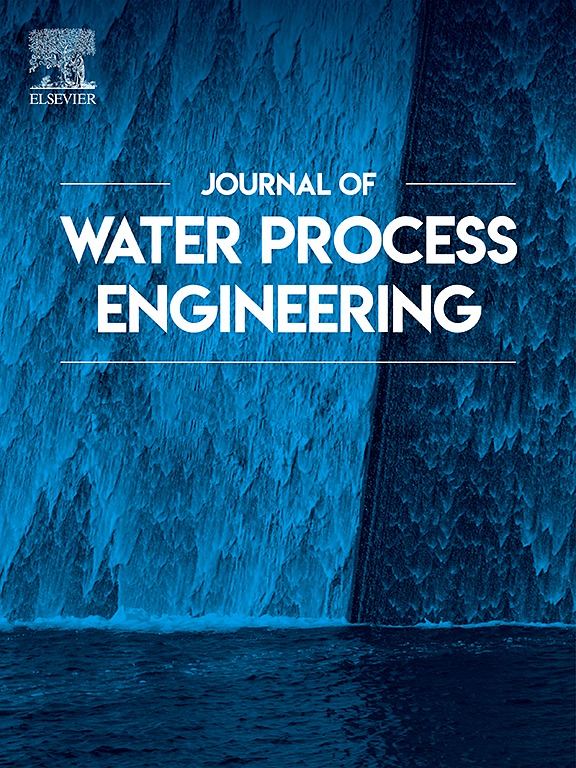Understanding the influence of energy and chemical use on water treatment plants carbon emissions accounting
IF 6.3
2区 工程技术
Q1 ENGINEERING, CHEMICAL
引用次数: 0
Abstract
Urban drinking water treatment plants (DWTPs) depend on energy-chemical-intensive processes to treat drinking water, leading to carbon emissions during their operations. Variations in water quality parameters during these treatments may influence the emissions and efficiency of these plants. Thus, this study conducted a systematic assessment of carbon emissions accounting through the emission factor method in two urban DWTPs. Subsequently, multivariate and regression analyses were conducted to better understand the statistical relationships between energy, chemicals, and water quality parameters. Results show that the total carbon emissions intensity for both plants amounted to 0.328 kgCO₂-eq/m3, with treatment systems, chemicals, sludge, and facilities responsible for 60 %, 35.6 %, 2.5 %, and 1.9 %, respectively. Chemicals like polyaluminium chloride (PAC) were significant contributors to both plants, emitting 0.089 kgCO2-eq/m3 of the total carbon emissions. The emissions intensity for both plants varies due to the continuous pumping and the chemicals used for treatment. However, the addition of CO2 significantly reduces carbon emissions for the conventional treatment stages in one of the DWTPs. The regression and relative importance analysis conducted on carbon emission intensity, water quality parameters, and chemicals showed that the model is a good fit for understanding the variations in chemical and carbon emissions. Factors such as water temperature, turbidity, alkalinity, and permanganate were found to significantly influence the DWTPs. Conclusions of previous energy versus water supply studies, combined with findings from this research, indicate that the influence of climate change on DWTPs may vary depending on the location and individual processes involved.

求助全文
约1分钟内获得全文
求助全文
来源期刊

Journal of water process engineering
Biochemistry, Genetics and Molecular Biology-Biotechnology
CiteScore
10.70
自引率
8.60%
发文量
846
审稿时长
24 days
期刊介绍:
The Journal of Water Process Engineering aims to publish refereed, high-quality research papers with significant novelty and impact in all areas of the engineering of water and wastewater processing . Papers on advanced and novel treatment processes and technologies are particularly welcome. The Journal considers papers in areas such as nanotechnology and biotechnology applications in water, novel oxidation and separation processes, membrane processes (except those for desalination) , catalytic processes for the removal of water contaminants, sustainable processes, water reuse and recycling, water use and wastewater minimization, integrated/hybrid technology, process modeling of water treatment and novel treatment processes. Submissions on the subject of adsorbents, including standard measurements of adsorption kinetics and equilibrium will only be considered if there is a genuine case for novelty and contribution, for example highly novel, sustainable adsorbents and their use: papers on activated carbon-type materials derived from natural matter, or surfactant-modified clays and related minerals, would not fulfil this criterion. The Journal particularly welcomes contributions involving environmentally, economically and socially sustainable technology for water treatment, including those which are energy-efficient, with minimal or no chemical consumption, and capable of water recycling and reuse that minimizes the direct disposal of wastewater to the aquatic environment. Papers that describe novel ideas for solving issues related to water quality and availability are also welcome, as are those that show the transfer of techniques from other disciplines. The Journal will consider papers dealing with processes for various water matrices including drinking water (except desalination), domestic, urban and industrial wastewaters, in addition to their residues. It is expected that the journal will be of particular relevance to chemical and process engineers working in the field. The Journal welcomes Full Text papers, Short Communications, State-of-the-Art Reviews and Letters to Editors and Case Studies
 求助内容:
求助内容: 应助结果提醒方式:
应助结果提醒方式:


